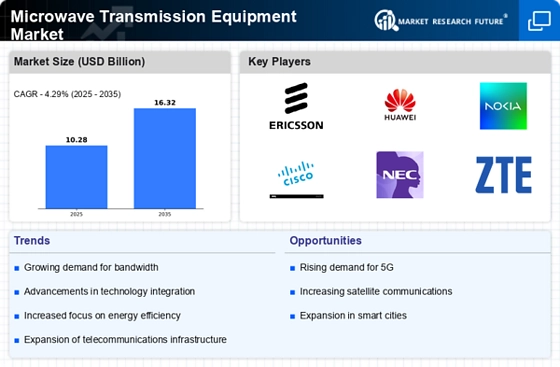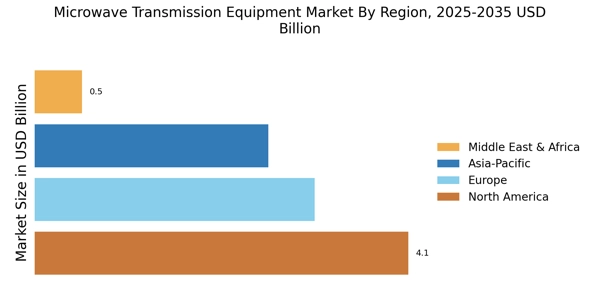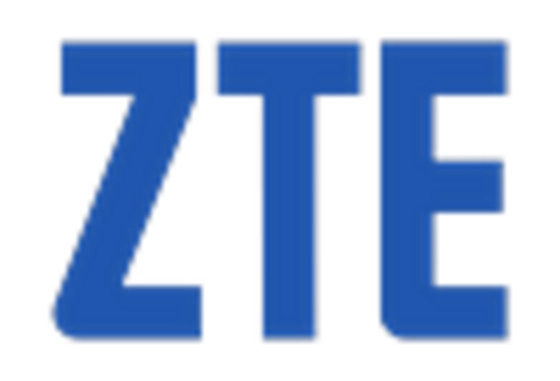Emergence of 5G Technology
The emergence of 5G technology is poised to be a transformative force within the Microwave Transmission Equipment Market. As telecommunications providers roll out 5G networks, the demand for high-capacity microwave transmission systems is expected to escalate. 5G technology requires robust backhaul solutions to support its high data rates and low latency, which microwave transmission equipment can effectively provide. Industry forecasts suggest that the global 5G infrastructure market could reach hundreds of billions of dollars by the end of the decade, creating substantial opportunities for microwave equipment manufacturers. This shift towards 5G is likely to drive innovation in microwave technology, leading to the development of more advanced and efficient transmission systems.
Expansion of Telecommunications Infrastructure
The expansion of telecommunications infrastructure is significantly influencing the Microwave Transmission Equipment Market. As countries invest in modernizing their communication networks, the demand for microwave transmission systems is expected to rise. Recent reports indicate that investments in telecommunications infrastructure are projected to reach several billion dollars annually, driven by the need for improved connectivity and coverage. This expansion is particularly relevant in developing regions, where the establishment of new networks is essential for economic growth. Microwave transmission equipment plays a crucial role in bridging the connectivity gap, offering a cost-effective solution for long-distance communication. As such, the ongoing infrastructure projects are likely to bolster the market for microwave transmission equipment.
Rising Demand for High-Speed Data Transmission
The increasing demand for high-speed data transmission is a primary driver for the Microwave Transmission Equipment Market. As businesses and consumers alike seek faster internet connectivity, the need for efficient microwave transmission systems has surged. According to recent data, the demand for bandwidth is projected to grow exponentially, with estimates suggesting a compound annual growth rate of over 20% in the next few years. This trend is particularly evident in urban areas where the proliferation of smart devices and high-definition content consumption necessitates robust transmission solutions. Consequently, manufacturers are focusing on developing advanced microwave transmission equipment that can support higher frequencies and greater data throughput, thereby enhancing overall network performance.
Growing Need for Reliable Communication in Remote Areas
The growing need for reliable communication in remote areas is a critical driver for the Microwave Transmission Equipment Market. Many regions, particularly rural and underserved areas, lack adequate communication infrastructure, which hampers economic development and access to information. Microwave transmission systems offer a viable solution for extending connectivity to these locations, as they can be deployed quickly and cost-effectively compared to traditional wired solutions. Recent initiatives aimed at improving digital inclusion have led to increased investments in microwave technology, with governments and private entities collaborating to enhance communication networks. This trend is likely to continue, further propelling the demand for microwave transmission equipment as a means to bridge the digital divide.
Increased Adoption of Wireless Communication Technologies
The increased adoption of wireless communication technologies is a notable driver for the Microwave Transmission Equipment Market. With the shift towards wireless solutions, businesses are increasingly relying on microwave transmission systems to facilitate communication without the need for extensive cabling. This trend is underscored by the growing number of mobile subscribers, which has surpassed several billion globally. The convenience and flexibility offered by wireless technologies are compelling factors for organizations looking to enhance their operational efficiency. Furthermore, advancements in microwave technology, such as the development of compact and efficient equipment, are making these systems more accessible. As a result, the market for microwave transmission equipment is poised for growth as more entities transition to wireless communication.


















Leave a Comment